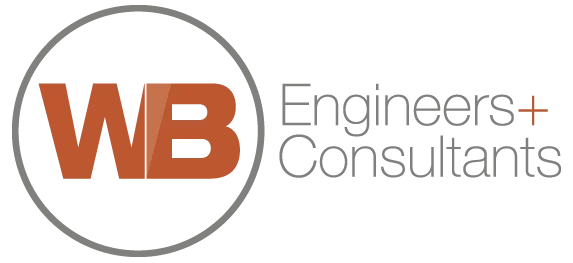Our Work
Retro-Commissioning: Our Process Explained
May 24, 2023
As an end user, how can you maximize the performance of your space? One answer is through retro-commissioning. Retro-commissioning is a process that identifies inefficiencies, fine-tunes operations, and unlocks hidden opportunities in existing buildings – with an average payback time of 1.1 years. In a previous blog, we talked about the specific benefits of retro-commissioning (like improved environmental quality and savings on energy costs by optimizing system performance). Building on that post, this one details each phase of our retro-commissioning process.
INVESTIGATION PHASE
Through the investigation phase, we work to better understand the existing systems within a building, so that our team can develop the Current Facility Requirements (CFR). This includes:
- Reviewing design/as built documentation of the existing systems.
- Walking the site to better understand the systems that will be tested.
- Meeting with facilities personnel to understand the space requirements and challenges.
DESIGN PHASE
Once we’ve developed the CFR, we move into the design phase. Our team prepares:
- A commissioning plan to identify roles and responsibilities and equipment to be tested.
- Checklists for all the systems in the scope to comply with the CFR in the most optimal and efficient way.
CONSTRUCTION PHASE
The construction phase can be broken down into five stages: installation, pre-functional testing, functional testing, performance testing, and preparation of an issue log.
- Installation: We start with a physical inspection of the equipment and controls within a space.
- Pre-functional: We perform operational checks to see if the equipment is operating as intended. For example, we’ll make sure there are no unusual vibrations, and that fans rotate in the correct direction.
- Functional: We test control points monitored on a control system. A set of procedures guides our team as we test how the equipment responds (i.e., we’ll raise or lower the supply air temperature setpoint to make sure that the room heats or cools appropriately and that all systems are working cohesively).
- Performance Testing: We perform a benchmark reading for our clients. We use the information and results collected during the installation, pre-functional, and functional stages to identify how a piece of equipment is operating now compared to when it was new (essentially, looking at how effective it is).
- Prepare Issues log: We identify ways to improve system performance, space comfort, air quality, maintenance/access and identify Energy Conservation Measures (ECM’s) that should be implemented. Our energy team can assist in energy conservation calculations, decarbonization estimates, impacts to Local Law 97 (and similar codes) and ROI/payback for each ECM.
ACCEPTANCE PHASE
As the last phase of our retro-commissioning process, we:
- Confirm issues are resolved.
- Review/update operations and maintenance documents as needed.
- Update maintenance program as needed.
- Update as built record documentation and/or provide single line diagrams.
Through the investigation, design, construction, and acceptance stages, we help guide clients on how to make the best decisions for their business and their people. Over time, even with a robust maintenance program, building systems and their components will fail or not function optimally without ever knowing it. Depending on the situation, the systems can compensate for these issues by overworking leading to wasted energy, reduced life expectancy and compromised space comfort. Some of these solutions are low-cost measures such as adjustments, recalibrations and process changes that provide quick paybacks. This step-by-step approach highlights the many opportunities we have to uncover and resolve these hidden issues. Please email me directly if you’d like to learn more about our retro-commissioning process.







